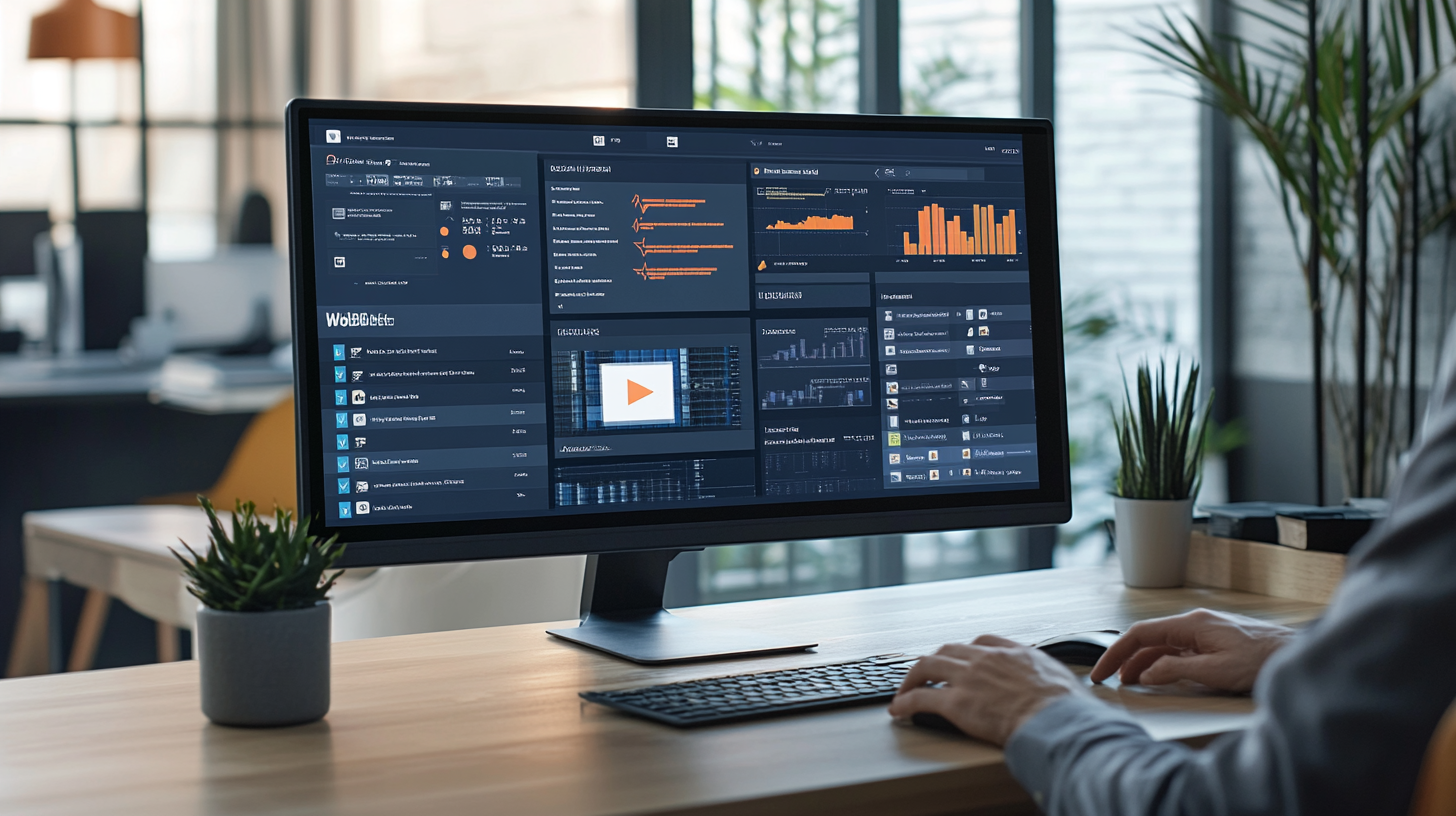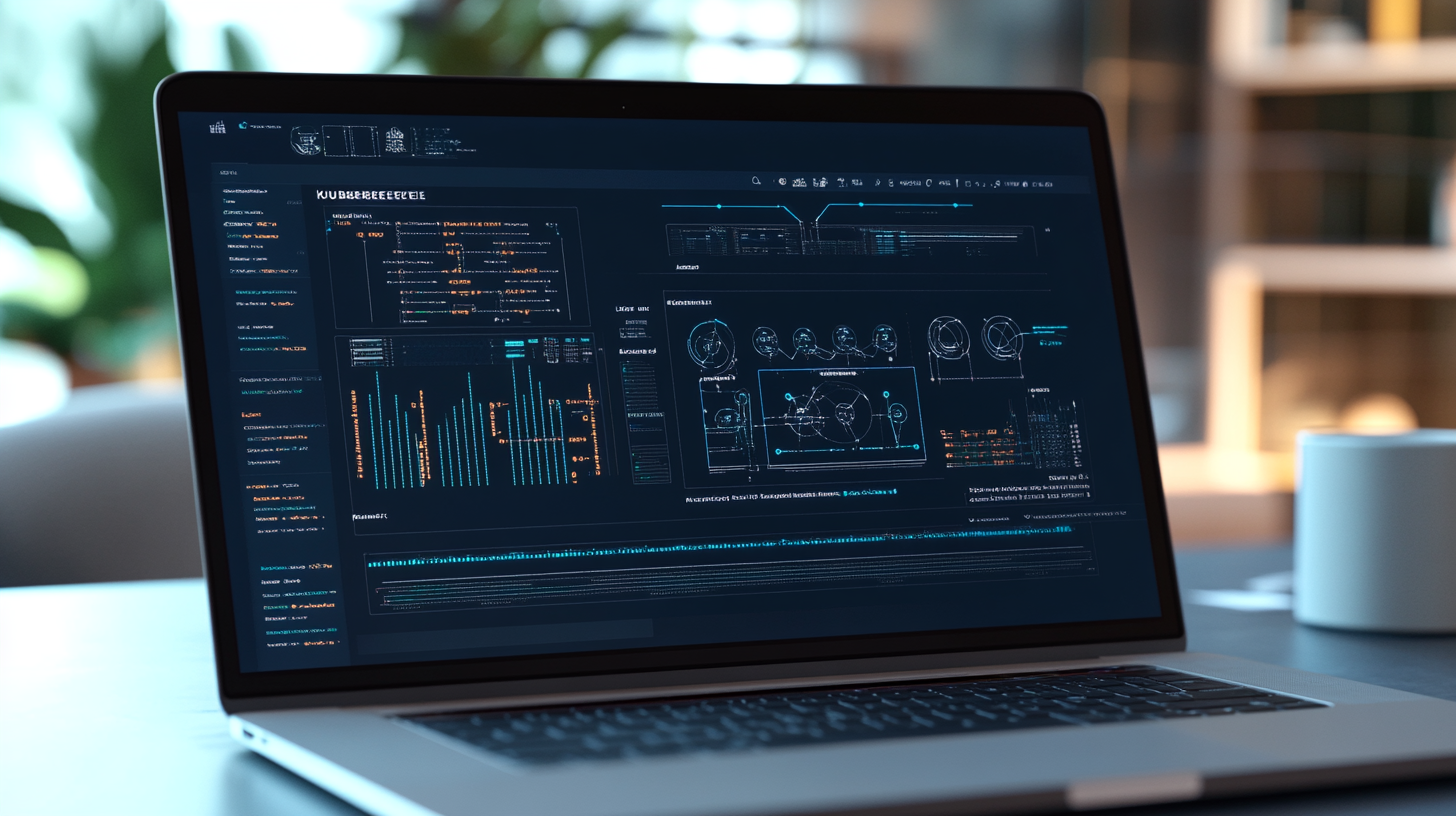Containerized WordPress has revolutionized the way websites are deployed, offering unmatched scalability and portability by harnessing the power of Docker and Kubernetes. As WordPress continues to dominate as a content management system, ensuring its stability and availability is paramount. One innovative approach gaining traction is the adoption of crash-only design patterns, enabling systems to recover rapidly by embracing controlled crashes and restarts rather than relying on complex error handling. This technique, when combined with containerization, paves the way for resilient, maintainable WordPress deployments that support zero-downtime patching.

Understanding Containerized WordPress and Crash-Only Design Patterns for Resilient Deployments
Containerized WordPress refers to the practice of deploying WordPress environments within containers managed by orchestration platforms like Docker and Kubernetes. These containers encapsulate the WordPress application along with its dependencies, enabling consistent execution across diverse environments. By leveraging container orchestration, developers and system administrators can achieve scalable, portable WordPress setups that simplify deployment workflows and enhance resource utilization.
Crash-only design patterns represent a paradigm shift in building fault-tolerant systems. Instead of attempting to write intricate error-handling code to manage every possible failure scenario, systems designed with this pattern intentionally "crash" when encountering an issue and rely on automated recovery mechanisms to restart cleanly. This approach reduces system complexity and improves reliability by treating failure as a normal event rather than an exception. In the context of cloud-native WordPress deployments, applying crash-only principles ensures that faulty containers are quickly terminated and replaced with fresh instances, minimizing downtime and service disruption.
Adopting a crash-only architecture is increasingly crucial for modern WordPress hosting environments, particularly those running in dynamic cloud ecosystems. This design enhances site stability by preventing error accumulation and memory leaks that can degrade performance over time. Moreover, it streamlines maintenance by allowing administrators to redeploy or patch WordPress containers without worrying about intricate shutdown procedures or state reconciliation.
The benefits for WordPress site stability and maintainability are significant. Containerized WordPress instances designed with crash-only patterns support zero-downtime patching, enabling security updates and feature upgrades to be rolled out seamlessly without interrupting user access. This capability is vital for high-traffic websites where even brief outages can lead to lost revenue and diminished user experience.
Key concepts essential to this approach include:
- Ephemeral containers: Temporary containers that exist only for the duration of a task or session, facilitating quick replacement and minimal state retention.
- Disposable instances: Stateless WordPress containers designed to be terminated and recreated without impacting persistent data.
- Zero-downtime patching: The ability to apply updates and patches without causing any noticeable interruption to website availability.
- Crash-only architecture: Building systems that handle failures by crashing and restarting rather than complex error recovery, promoting simplicity and resilience.
By integrating these principles, WordPress deployments become more robust, easier to manage, and capable of delivering continuous service even during updates or unexpected failures. This foundation sets the stage for building disposable WordPress instances using Kubernetes ephemeral containers and implementing advanced deployment strategies that ensure seamless, secure, and highly available WordPress hosting.

Building Disposable WordPress Instances Using Kubernetes Ephemeral Containers
Kubernetes ephemeral containers play a pivotal role in managing transient workloads that require rapid creation and destruction without long-term state retention. These containers are ideal for running disposable WordPress instances that embody the crash-only design philosophy, ensuring that every failure or update leads to a clean restart of the application environment.
Overview of Kubernetes Ephemeral Containers and Their Role in Transient Workloads
Ephemeral containers in Kubernetes are lightweight, short-lived containers designed to be injected into running pods for troubleshooting or temporary tasks. However, when repurposed for hosting WordPress, they enable the creation of stateless, disposable instances that can be terminated and recreated swiftly. This transient nature aligns perfectly with crash-only architecture, where containers are never patched in place but replaced entirely to ensure freshness and reliability.
Step-by-Step Guide to Creating Disposable WordPress Containers
Container Image Selection and Customization for WordPress
Begin by selecting a robust base Docker image tailored for WordPress, such as the official WordPress image, which includes PHP, Apache, and necessary extensions. Customize this image by incorporating your theme, plugins, and security configurations. To maintain the ephemeral nature, avoid embedding persistent data within the container; instead, externalize storage.Configuring Ephemeral Containers for Stateless WordPress Pods
Design your Kubernetes pod specifications to launch WordPress containers as ephemeral pods. This involves setting therestartPolicytoAlwaysand using ephemeral storage within the container. The application should not maintain any session state or user-uploaded files locally. Instead, all mutable data must reside outside the container to preserve statelessness.Handling Persistent Storage with External Databases and Volumes
Since WordPress relies heavily on a MySQL or MariaDB database and media uploads, persistent storage must be managed externally. Use managed database services or Kubernetes StatefulSets with persistent volume claims (PVCs) to ensure data durability. For media files, consider object storage solutions like Amazon S3 or persistent volumes mounted as shared storage to retain continuity across container restarts.
Automating Container Lifecycle Management for Crash-Only Behavior
To fully embrace crash-only design, automate container lifecycle management so that WordPress pods can be terminated and recreated without manual intervention. Kubernetes controllers such as Deployments or StatefulSets facilitate this by monitoring pod health and automatically replacing unhealthy instances. Integrate health checks to detect failures promptly and trigger restarts seamlessly.
Best Practices for Container Health Checks and Readiness Probes to Support Quick Failover
Implementing robust health checks is essential for maintaining high availability. Use Kubernetes liveness probes to detect when a WordPress container has become unresponsive or encountered fatal errors, prompting Kubernetes to kill and restart the pod. Readiness probes help control traffic flow by ensuring that only fully initialized and ready containers receive requests, preventing downtime during startup or patches.
Example probes include HTTP GET requests to WordPress health endpoints or executing PHP scripts that verify database connectivity.
Example Kubernetes YAML Snippets for Ephemeral WordPress Pods
apiVersion: apps/v1
kind: Deployment
metadata:
name: wordpress-ephemeral
spec:
replicas: 3
selector:
matchLabels:
app: wordpress
template:
metadata:
labels:
app: wordpress
spec:
containers:
- name: wordpress
image: wordpress:latest
ports:
- containerPort: 80
env:
- name: WORDPRESS_DB_HOST
value: mysql-service
- name: WORDPRESS_DB_USER
valueFrom:
secretKeyRef:
name: wp-db-credentials
key: username
- name: WORDPRESS_DB_PASSWORD
valueFrom:
secretKeyRef:
name: wp-db-credentials
key: password
volumeMounts:
- name: uploads
mountPath: /var/www/html/wp-content/uploads
readinessProbe:
httpGet:
path: /wp-login.php
port: 80
initialDelaySeconds: 10
periodSeconds: 5
livenessProbe:
httpGet:
path: /wp-login.php
port: 80
initialDelaySeconds: 15
periodSeconds: 20
volumes:
- name: uploads
persistentVolumeClaim:
claimName: wp-uploads-pvc
This deployment demonstrates how ephemeral WordPress pods can be configured with health checks and persistent storage separated from the container lifecycle. By leveraging such Kubernetes constructs, WordPress environments become highly resilient, enabling rapid crash-only restarts and supporting seamless zero-downtime patching.

By building disposable WordPress instances on Kubernetes ephemeral containers, organizations can simplify maintenance, reduce downtime, and create a foundation for advanced deployment strategies such as blue-green deployments and automated patching workflows. This approach ensures that WordPress remains responsive, secure, and scalable in dynamic cloud-native environments.
Implementing Blue-Green Deployment Strategies for Seamless WordPress Security Updates
To achieve zero-downtime patching in containerized WordPress environments, blue-green deployment stands out as a powerful strategy. This method involves maintaining two identical environments—commonly referred to as “blue” and “green”—where one serves live traffic while the other is updated or tested. Once the new environment is validated, traffic shifts seamlessly from the old to the updated version, ensuring continuous availability.
Explanation of Blue-Green Deployment and Its Advantages for Zero-Downtime Updates
Blue-green deployment eliminates downtime by decoupling deployment from live traffic. When security patches or feature upgrades need to be applied, the new version of WordPress is deployed in parallel on the inactive environment. This approach avoids directly updating the live system, preventing service interruptions and allowing thorough validation before going live.

The key advantage is the ability to roll back instantly by redirecting traffic back to the previous environment if issues arise during or after deployment. This flexibility is crucial for WordPress, where plugins or themes can introduce unexpected conflicts following patches.
How Blue-Green Deployment Complements Crash-Only Design Patterns in Containerized WordPress
Blue-green deployment perfectly complements crash-only design principles by treating each environment as a disposable instance. Instead of patching running containers in place, the crash-only approach encourages terminating faulty instances and spinning up fresh, patched containers. Blue-green deployment leverages this by preparing the “green” environment with updated containers while the “blue” environment continues serving users uninterrupted.

This synergy enhances WordPress site stability and maintainability, as updates become repeatable, reversible, and non-disruptive. It aligns with Kubernetes’ strengths in managing container lifecycles and traffic routing, enabling smooth transitions between environments.
Detailed Workflow for Applying Security Patches Using Blue-Green
Spinning Up a New “Green” WordPress Environment with Updated Images and Patches
Begin by building updated container images that include the latest WordPress core, plugin, or theme patches. Deploy these images to the “green” environment using Kubernetes manifests or Helm charts. This environment runs alongside the existing “blue” version but does not yet receive live traffic.Traffic Shifting from “Blue” to “Green” with Sub-Second Failover Using Kubernetes Services or Ingress Controllers
After thorough testing, switch live traffic from “blue” to “green” by updating the Kubernetes Service selector or ingress controller rules. Kubernetes handles the routing seamlessly, making failover near-instantaneous and invisible to users. This sub-second failover ensures no disruption during patch deployment.Validation and Rollback Procedures in Case of Issues
Monitor the “green” environment closely for errors or performance issues post-deployment. If any problems arise, rollback is as simple as redirecting traffic back to the stable “blue” environment. Kubernetes’ declarative nature allows quick rollbacks without manual intervention.
Integrating CI/CD Pipelines for Automated Patch Deployment and Testing
Automating blue-green deployments through Continuous Integration and Continuous Deployment (CI/CD) pipelines elevates efficiency and reliability. Pipelines can:
- Automatically build updated WordPress container images upon detecting new patches.
- Run automated testing suites to validate functionality and security.
- Deploy updates to the “green” environment automatically.
- Trigger traffic shifts based on successful test results.
- Facilitate immediate rollback if automated or manual checks detect issues.
This automation reduces human error, accelerates patch cycles, and ensures consistent application of security best practices.
Real-World Examples of Blue-Green Deployments Reducing WordPress Downtime During Updates
Organizations leveraging blue-green deployments for WordPress have reported significant improvements in uptime and user experience. For instance, high-traffic news sites and e-commerce platforms have eliminated banner downtime during critical security updates, maintaining uninterrupted service for millions of daily visitors. By combining Kubernetes orchestration with crash-only design and blue-green strategies, these deployments achieve robust, scalable, and highly available WordPress hosting environments.
In summary, blue-green deployment represents a cornerstone methodology for implementing seamless WordPress security updates in containerized setups. When paired with Kubernetes’ traffic management and crash-only architecture, it ensures that patching is safe, reversible, and completely transparent to end-users. This technique is essential for maintaining trust, security, and performance in professional WordPress hosting scenarios.
Achieving Sub-Second Failover and High Availability in Containerized WordPress Environments
Delivering a seamless user experience with WordPress requires not only robust deployment strategies but also the ability to recover from failures almost instantaneously. Achieving sub-second failover and maintaining high availability within Kubernetes-managed WordPress clusters is a critical component of modern containerized hosting environments.

Technical Requirements for Sub-Second Failover in Kubernetes-Managed WordPress Clusters
To realize failover times measured in milliseconds rather than seconds or minutes, several technical prerequisites must be met. First, the underlying Kubernetes infrastructure must be optimized for rapid pod termination and creation. This includes tuning the container runtime and scheduler to prioritize fast container startups and ensuring that health checks accurately reflect container readiness and liveness.
Additionally, network routing must support swift traffic redirection without causing connection drops or session loss. This usually involves leveraging Kubernetes Services and ingress controllers configured for immediate failover. The coordination between these components is essential to maintain uninterrupted WordPress availability during container crashes or updates.
Leveraging Kubernetes Features: Readiness/Liveness Probes, Service Mesh, and Load Balancing
Kubernetes offers built-in mechanisms that facilitate high availability and rapid failover for WordPress deployments:

Readiness Probes: These checks determine when a WordPress container is fully prepared to serve requests. Only pods passing readiness probes receive traffic, preventing premature routing to uninitialized or failing containers.
Liveness Probes: Continuously monitor the health of WordPress containers. If a liveness probe fails, Kubernetes restarts the container automatically, enabling crash-only recovery patterns to take effect promptly.
Service Mesh Integration: Tools like Istio or Linkerd provide advanced traffic routing, observability, and circuit breaking. Service meshes enhance failover capabilities by dynamically rerouting traffic away from unhealthy pods with minimal latency.
Load Balancing: Kubernetes’ internal load balancers distribute incoming requests evenly across healthy WordPress pods. This balances resource utilization and ensures that no single pod becomes a bottleneck or single point of failure.
By combining these features, WordPress environments can detect failures quickly, isolate faulty containers, and redistribute traffic with near-zero delay.
Strategies for Session Persistence and Database Failover to Maintain User Experience
One challenge in achieving sub-second failover is preserving user sessions and database consistency. Stateless WordPress containers simplify failover, but user sessions and dynamic content depend on persistent backend services.

To address this:
Session Persistence: Implement external session storage using Redis or Memcached. Offloading session data from individual WordPress pods ensures that user sessions remain intact even if containers restart or failover occurs.
Database Failover: Use highly available database clusters with automatic failover capabilities, such as MySQL clusters with orchestrator or managed cloud databases that support replication and failover. This ensures that WordPress can maintain database connectivity without interruption during node failures.
Together, these strategies minimize user-visible disruptions and maintain seamless interactivity during container restarts or updates.
Monitoring and Alerting Tools to Detect Crashes and Trigger Automated Restarts
Effective monitoring is indispensable for maintaining high availability and crash-only recovery in containerized WordPress. Kubernetes-native tools like Prometheus and Grafana provide real-time metrics on pod health, resource usage, and response times. Alerts can be configured to notify administrators or trigger automated remediation workflows when anomalies or crashes are detected.

Furthermore, integrating Kubernetes Event-driven Autoscaling (KEDA) or custom operators can automate container restarts and scaling actions in response to failures, traffic spikes, or patch deployments. This proactive approach enhances resilience and accelerates recovery cycles.
Case Studies or Benchmarks Demonstrating Failover Times and Uptime Improvements
Organizations adopting Kubernetes-based, crash-only WordPress deployments with advanced failover strategies have reported impressive uptime metrics exceeding 99.99%. Benchmarks indicate that failover times can be reduced to under one second by fine-tuning readiness and liveness probes and optimizing traffic routing through service meshes.

For example, e-commerce platforms leveraging these technologies experience uninterrupted shopping sessions during updates or unexpected crashes, translating into increased customer satisfaction and revenue. News portals and blogs similarly benefit from continuous availability, preserving their reputation and search engine rankings.
In conclusion, achieving sub-second failover and high availability in containerized WordPress environments hinges on combining Kubernetes’ native features with smart session and database management. Monitoring and alerting systems complete the picture by enabling rapid detection and automated recovery, embodying the core principles of crash-only design. This resilience framework ensures WordPress sites remain responsive, secure, and accessible even under dynamic cloud workloads or during maintenance windows.


